Venture out into hidden corners
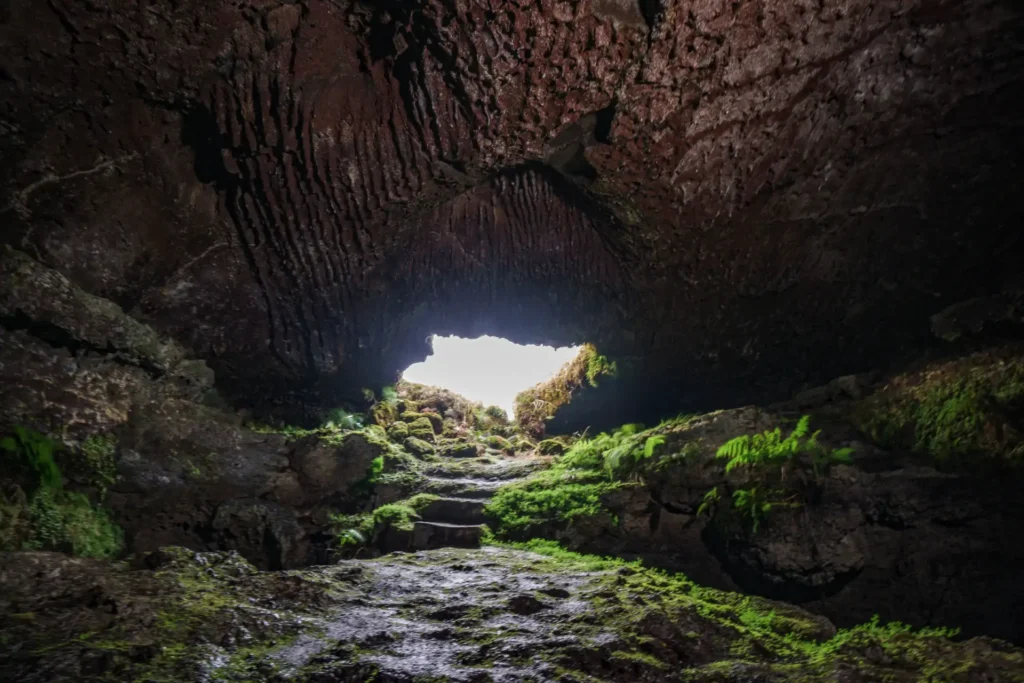
Furna do Frei Matias (Pico)
Furna do Frei Matias is the most popular cave of volcanic origin on the island of Pico and one of the most interesting in the Azores.
This cave is part of the Pico Mountain Nature Reserve and has a maximum width and height of 14 meters and 7 meters, respectively.
Ponta da Serreta (Terceira)
Located in the western most part of Terceira Island, Ponta da Serreta is an area about 600m long and 400m wide.
Its solidified lava fields, the result of volcanic activity, are today colonized by coastal populations of Erica Azorica.
This is one of the nicest places to admire the true beauty of the island and the ocean.
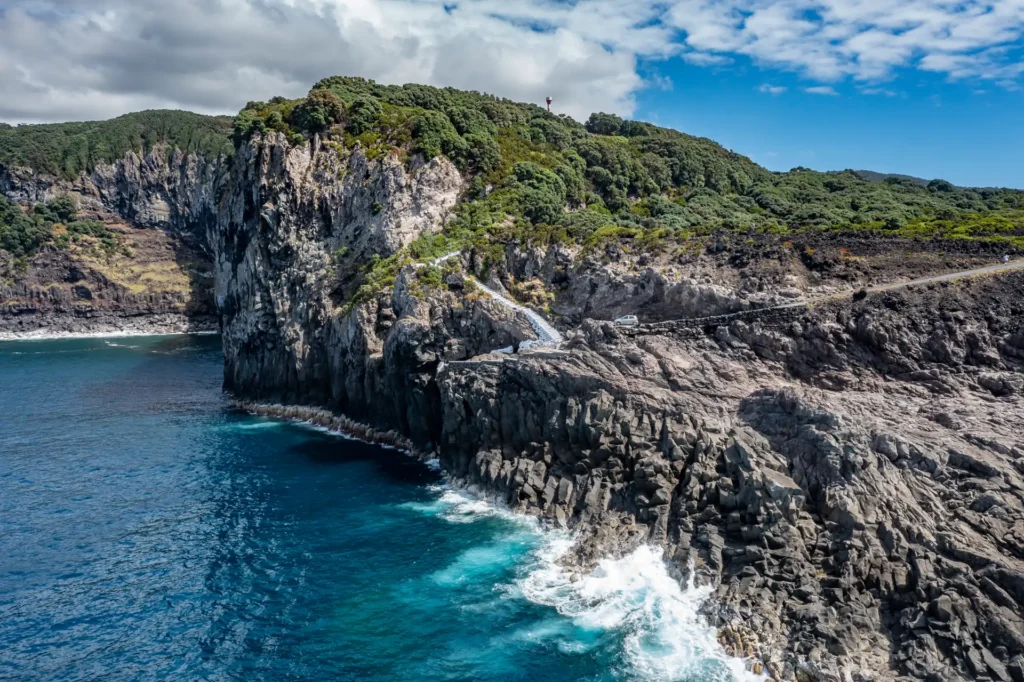
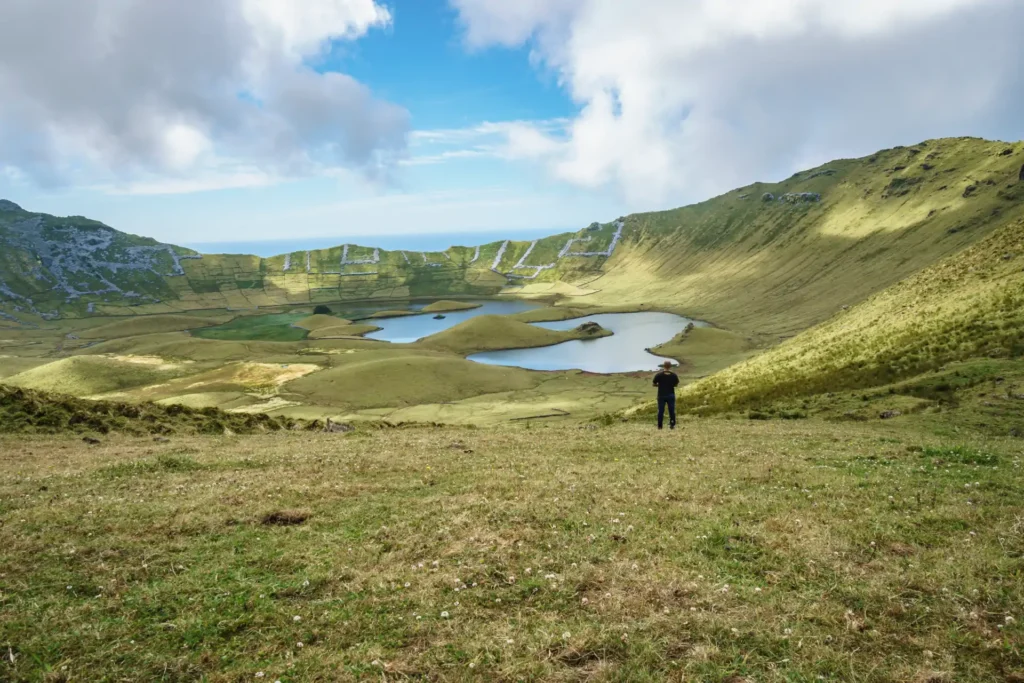
Miradouro do Caldeirão (Corvo)
The “Caldeirão” is undoubtedly the ex-libris of the island of Corvo.
This landscape is the result of the collapse of a volcanic caldera that originated a 2.3 km long and 1.9 km wide cauldron, on top of the central volcano of the island.
This depression is today occupied by a lagoon and several small volcanic cones, which, according to the Azorean culture, represents the nine islands of the Azores.
Termas do Carapacho (Graciosa)
Do you already know the thermal waters of Graciosa Island?
In the Azores the connection between Man and Nature in the Azores is made in a sustainable and beneficial way for both, an example of which is the Termas do Carapacho on the island of Graciosa.
These thermal baths are inserted in a bathing area in the place of Carapacho, parish of light, where it is possible to enjoy a relaxing thermal experience and with several health benefits.
The use of these hot springs for therapeutic purposes dates back to the 1750s, where this method was used to treat rheumatic diseases, skin, liver and colitis.
In these hot springs temperatures vary between 35ºC and 40ºC, making these an ideal experience for colder days and nights.
Currently the nineteenth-century building of the thermal baths has been completely renovated with 16 cabins for immersion baths and a doctor’s office, as well as spa services and medicinal therapies.

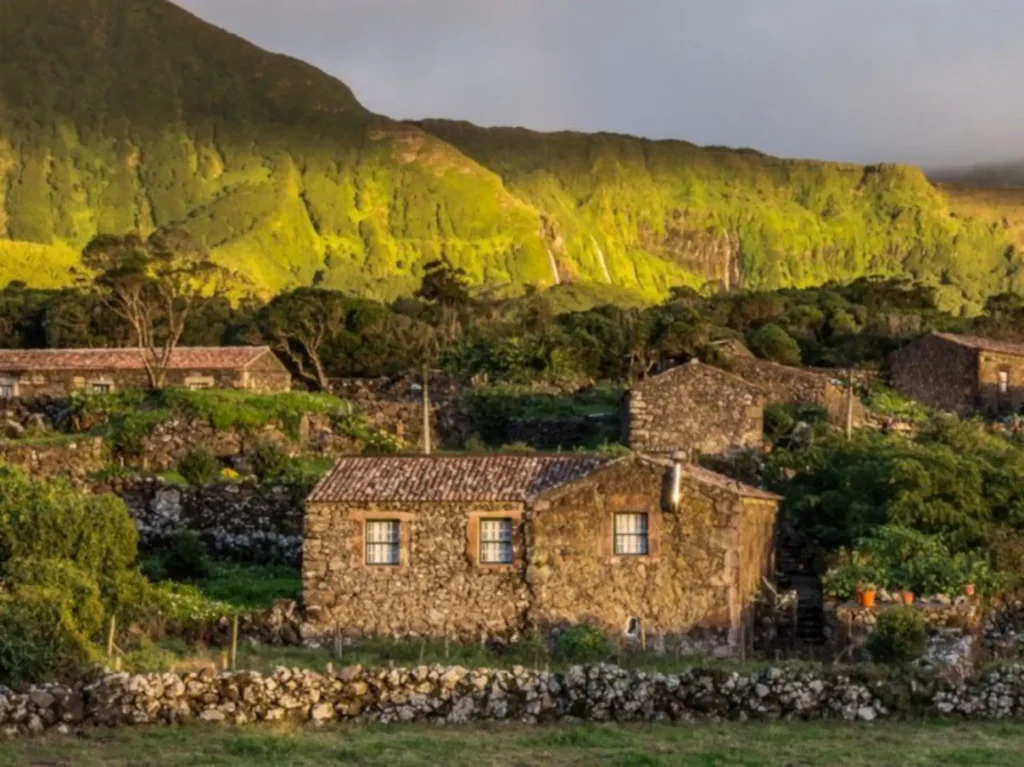
Aldeia da Cuada (Flores)
Aldeia da Cuada is the perfect example of how tourism can be a catalyst to preserve a local’s culture and history.
The origins of this village date back to the 18th century, where this village of stone houses was the shelter of several inhabitants who dedicated themselves to agriculture as a source of sustenance.
Nowadays, this village serves as tourist accommodation having a very high level of demand thanks to the possibility of disconnection, isolation and simplicity that the place transmits.
Photo: Azores Getaways
Morro de Velas and Morro de Lemos (São Jorge)
Located on the island of São Jorge, Morro de Velas and Morro de Lemos are cones of Surtseian tufts caused by underwater eruptions of basaltic nature.
Currently, these places are two of the most well-known and interesting geological landscapes of the island of São Jorge.

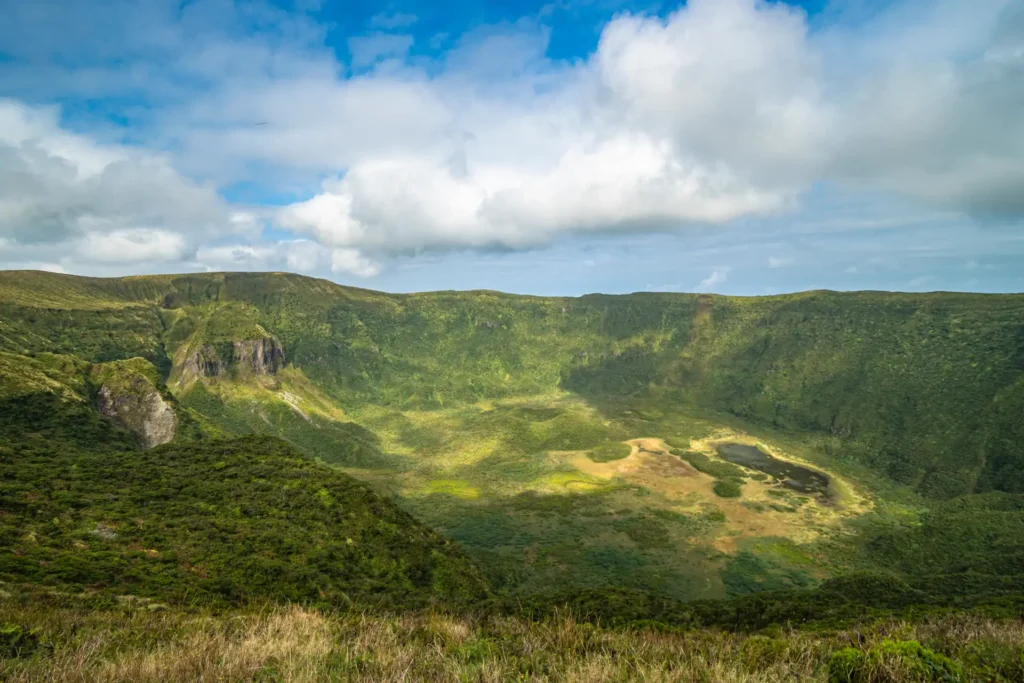
Caldeira do Faial (Faial)
The Caldeira do Faial island is one of the true ex-libris of the island.
With 2km in diameter and 400 meters deep, this protected landscape nature reserve was formed due to numerous eruptions over 400,000 years.
Here you can contemplate the magnificent views along the pedestrian path around the caldera.
An immense variety of flora and Laurissilva forest are two of the many reasons why you will not want to miss one of the best-known sites on the island of Faial.
Ponta do Castelo (Santa Maria)
Ponta do Castelo, located in the southeast of the island of Santa Maria, is a polygenetic cliff with 200 meters high composed of several types of rock.
This place is known for its famous lighthouse of Gonçalo Velho, the viewpoint of the whale lookout where you can contemplate the magnificent corrals of vineyards along the slope and the old whale factory that dates back to the whaling industry on the island in the 50s.
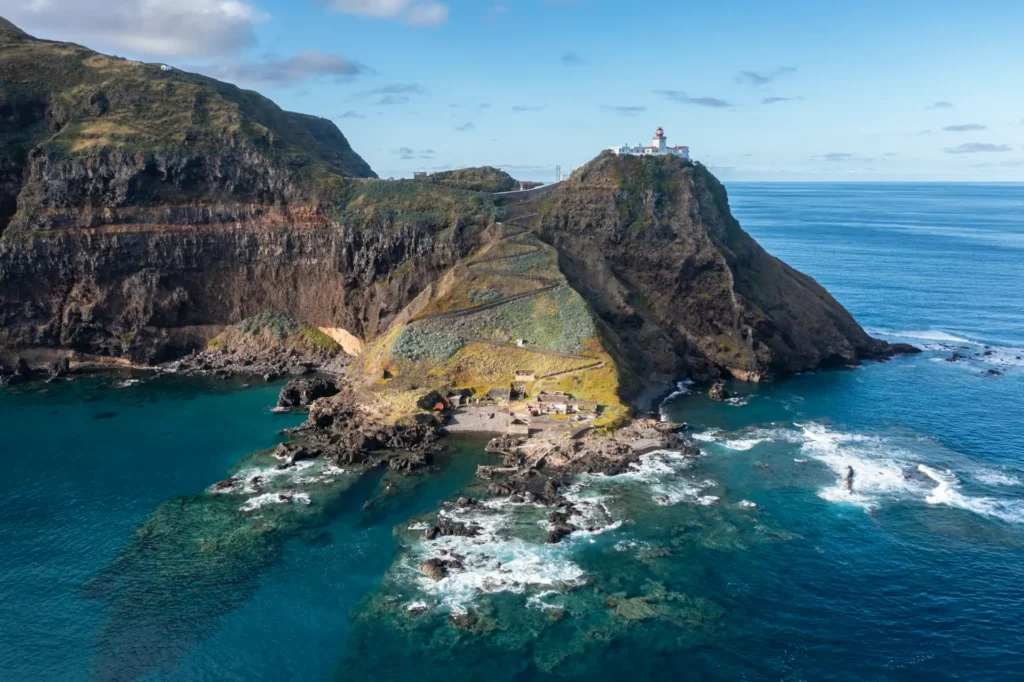

Lagoa do Congro (São Miguel)
Located in the central area of the island, northeast of Vila Franca do Campo, this lagoon is inserted in a protected area of 38 hectares.
The lagoon differs from the others on the island due to its formation having originated as a result of a sea-like explosion 3800 years ago. This eruption was of the hydromagmatic type where the interaction between rising magma with surface water or aquifers made this a very unique lagoon.
During your visit you can see in addition to a magnificent pond of water lilies, several exotic species and a variety of avifauna, from the famous star and kite to the heron.
In addition to these it is possible to find one of the most endangered amphibians in Europe, the crested newt, a protected exotic species with great conservation importance.
To get to the lagoon you will have to walk a trail of 700 meters where you can enjoy the magnificent landscapes.
